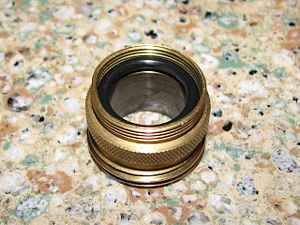1.You are not doing all grain, so why are you doing
full boils? Cut the volume of the boil to 2 gallons
and you can cool quickly in the sink with a smaller pot.
2. You don't need much high tech equipment, you need the
proper yeast for the style, and the proper temperature
for the fermentation and aging. You can control
the temp somewhat with cold water in a bucket but
that is not practical for conditioning over 2-4
weeks. You really need a second fridge and a
temperature controller, but it may not be an
absolute necessity in winter with a cool cellar.
3. I wouldn't worry about the all grain hype. Malt
extract is made with all grain methods, so it's
exactly the same thing. AG will save you money in
the very long run, but I wouldn't worry about
that or all the equipment that goes with it. You can
buy light dry malt extract cheap in bulk, and
with that you can make most beers with the
steeping method or partial mashes.
4. You don't need a stirrer to make a yeast starter
unless you are making huge starters for lager,
but if you are making lagers then you definitely
need temperature control, with fermentation
around 45F then lager at about 32F. You can make
the necessary starter with a quart bottle and
a small cork that fits with a hole in it for
an airlock. You only need half a quart, and
in fact I've made great beer by just emptying
the foil pack a day after initiating it, but
mind you, this was with *proper temperature
control*. In fact, Wyeast sells starter packs
that already have the proper amount of
yeast in them. Buy one of these, then
propagate it to your next batch.
www.wyeastlab.com
Figure out a way with your stuff to control
the temp, use a liquid yeast and your battle
is 99% won as far as process goes. Now, learning
how the ingredients affect the taste is another
story.
Jim




































![Craft A Brew - Safale BE-256 Yeast - Fermentis - Belgian Ale Dry Yeast - For Belgian & Strong Ales - Ingredients for Home Brewing - Beer Making Supplies - [3 Pack]](https://m.media-amazon.com/images/I/51bcKEwQmWL._SL500_.jpg)


























